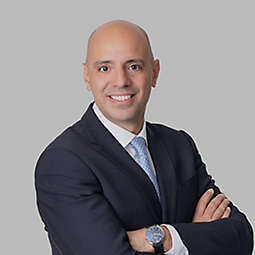Overview
Overview
NYLI PineStone International Equity Fund seeks to achieve capital appreciation by investing in a portfolio of the investment team’s highest conviction ideas from international developed countries and emerging markets. The Fund invests at least 80% of its net assets in equity securities of companies located in at least three countries other than the United States, including emerging market countries.
Focused, high conviction strategy
Portfolio of high-conviction international companies possessing sustainable competitive advantages seeking to generate attractive returns on invested capital (ROIC).
“Time edge"
Long-term investment orientation combining patience and discipline to uncover high-quality companies that can compound superior shareholder value over time.
Unwavering commitment
PineStone, a founder lead firm which has consistently applied a disciplined investment philosophy and process since 2009.
Performance
Performance
Class A & INV: 5.5% maximum initial sales charge; a 1% CDSC may be imposed on certain redemptions made within 18 months of the date of purchase on shares that were purchased without an initial sales charge. Class B: CDSC up to 5% if redeemed within six years. Class C: 1% CDSC if redeemed within one year. Class I: No initial sales charge or CDSC.
Returns represent past performance which is no guarantee of future results. Current performance may be lower or higher. Investment return and principal value will fluctuate, and shares, when redeemed, may be worth more or less than their original cost. No initial sales charge applies on investments of $1 million or more (and certain other qualified purchases). However, a contingent deferred sales charge of 1.00% may be imposed on certain redemptions made within 18 months of the date of purchase on shares that were purchased without an initial sales charge. Expenses stated are as of the fund's most recent prospectus.
Effective August 25, 2023, the Fiera Capital International Equity Fund (the "Predecessor Fund") was reorganized into the NYLI PineStone International Equity Fund (the Fund). As accounting successor to the Predecessor Fund, the Fund has assumed the Predecessor Fund's historical performance. Therefore, the performance information prior to August 25, 2023 is that of the Predecessor Fund, which had a different fee structure from the Fund. The returns of the Predecessor Fund have not been adjusted to reflect the applicable expenses of the Fund.
New York Life Investments has contractually agreed to waive fees and/or reimburse expenses so that Total Annual Fund Operating Expenses (excluding taxes, interest, litigation, extraordinary expenses, brokerage and other transaction expenses relating to the purchase or sale of portfolio investments, and acquired (underlying) fund fees and expenses) for a class do not exceed the following percentage of its average daily net assets: Class A, 1.15%; Class C, 2.05%; Class I, 0.85%; and Class R6, 0.84%. This agreement will remain in effect until February 28, 2026, and thereafter shall renew automatically for one-year terms unless New York Life Investments provides written notice of termination prior to the start of the next term or upon approval of the Board of Trustees of the Fund. Board.
Portfolio
Portfolio
Distribution & Yields
Distribution & Yields
Subsidized Yield: the yield of a fund that includes any fee waivers or reimbursements currently in place by the fund’s manager. This figure shows the income generated by the fund after accounting for reduced expenses, giving a more favorable representation of returns under current conditions.
Unsubsidized Yield: the yield of a fund that excludes any fee waivers or reimbursements. It reflects the income the fund would generate if the full expenses were charged, offering a view of returns without any temporary fee reductions.
Distributions may be comprised of ordinary income, net capital gains, and/or a return of capital (ROC) of your investment in the fund. Because the distribution rate and the 12-month rate may include a ROC, they should not be confused with yield or income. Please refer to the most recent Section 19 Notice, if applicable, for additional information regarding the composition of distributions. Final determination of a distribution’s tax character will be made on Form 1099 DIV sent to shareholders each January.
Distribution Rate: The distribution rate measures the percentage return in the form of dividends. It is calculated daily by annualizing the most recent dividend distribution and dividing by the daily share price (NAV or POP). If the Fund did not make a distribution as of the latest scheduled distribution date, "N/A" will be displayed.
12-month Rate: The 12-month rate measures the percentage return in the form of dividends. It is calculated monthly by taking the sum of the trailing 12-month dividend payments divided by the last month's ending share price (NAV or POP) plus any capital gains distributed over previous 12 months. If the Fund did not make any distributions over the previous 12 months, "N/A" will be displayed.
The 30 Day SEC Yield is calculated by dividing the net investment income per share for the first 30 days of the month by the offering price per share at the end of that period. The yield reflects the dividends and interest earned during the period, after the deduction of the Fund's expenses. Yield reflects a fee waiver and/or expense limitation agreement without which the 30 Day SEC Yield would have been lower.
Dividend distributions are the distribution of a dividend to mutual fund shareholders as of a certain date. The following Funds declare daily dividends: NYLI MacKay California Muni Fund, NYLI Floating Rate, NYLI MacKay High Yield Muni Bond Fund, NYLI MacKay U.S. Infrastructure Bond Fund, NYLI Money Market, NYLI MacKay New York Muni Fund, NYLI MacKay Short Term Muni Fund and NYLI MacKay Tax Free Bond.
Fees & Expenses
Fees & Expenses
New York Life Investments has contractually agreed to waive fees and/or reimburse expenses so that Total Annual Fund Operating Expenses (excluding taxes, interest, litigation, extraordinary expenses, brokerage and other transaction expenses relating to the purchase or sale of portfolio investments, and acquired (underlying) fund fees and expenses) for a class do not exceed the following percentage of its average daily net assets: Class A, 1.15%; Class C, 2.05%; Class I, 0.85%; and Class R6, 0.84%. This agreement will remain in effect until February 28, 2026, and thereafter shall renew automatically for one-year terms unless New York Life Investments provides written notice of termination prior to the start of the next term or upon approval of the Board of Trustees of the Fund. Board.
Team
Team
A specialist global equity manager.
A boutique managing high conviction, long-only equity strategies. PineStone is a founder led firm which has consistently applied a disciplined investment philosophy and process since 2009.

Nadim Rizk
Lead Portfolio Manager

Andrew Chan
Portfolio Manager
Literature
Literature
04/16/2025Fact Sheets.PDF0.2 MB
04/22/2025Product Commentary.PDF0.2 MB
-Prospectus
-Prospectus
-Statement of Additional Information
BEFORE YOU INVEST
All investments are subject to market risk, including possible loss of principal.
Foreign securities can be subject to greater risks than U.S. investments, including currency fluctuations, less liquid trading markets, greater price volatility, political and economic instability, less publicly available information, and changes in tax or currency laws or monetary policy. These risks are likely to be greater for emerging markets than in developed markets.
Because the Fund typically invests in relatively few holdings, a larger percentage of its assets may be invested in a particular issuer or in fewer companies than is typical of other mutual funds. This may increase volatility of the Fund’s NAVs. The Fund will be more susceptible to adverse economic, political, regulatory or market developments affecting a single issuer than a fund that is invested more broadly.
The investment strategies, practices and risk analyses used by the Subadvisor may not produce the desired results or expected returns. The investments selected by the Subadvisor may underperform the market in which the Fund invests or other investments.
The Fund may also invest in securities issued by other investment companies which may subject the Fund indirectly to the risks of that investment company. The Fund also will bear its share of the underlying investment company's fees and expenses, which are in addition to the Fund's own fees and expenses.
The Morningstar Rating™ for funds, or "star rating", is calculated for managed products (including mutual funds, variable annuity and variable life subaccounts, exchange-traded funds, closed-end funds, and separate accounts) with at least a three-year history. Exchange-traded funds and open-ended mutual funds are considered a single population for comparative purposes. It is calculated based on a Morningstar Risk-Adjusted Return measure that accounts for variation in a managed product's monthly excess performance, placing more emphasis on downward variations and rewarding consistent performance (this does not include the effects of sales charges, loads, and redemption fees). The top 10% of products in each product category receive 5stars, the next 22.5% receive 4 stars, the next 35% receive 3 stars, the next 22.5% receive 2 stars, and the bottom 10% receive 1 star. The Overall Morningstar Rating for a managed product is derived from a weighted average of the performance figures associated with its three-, five-, and 10-year (if applicable) Morningstar Rating metrics. The weights are: 100% three-year rating for 36-59 months of total returns, 60% five-year rating/40% three-year rating for 60-119 months of total returns, and 50% 10-year rating/30% five-year rating/20% three-year rating for 120 or more months of total returns. While the 10-year overall star rating formula seems to give the most weight to the 10-year period, the most recent three-year period actually has the greatest impact because it is included in all three rating periods.




